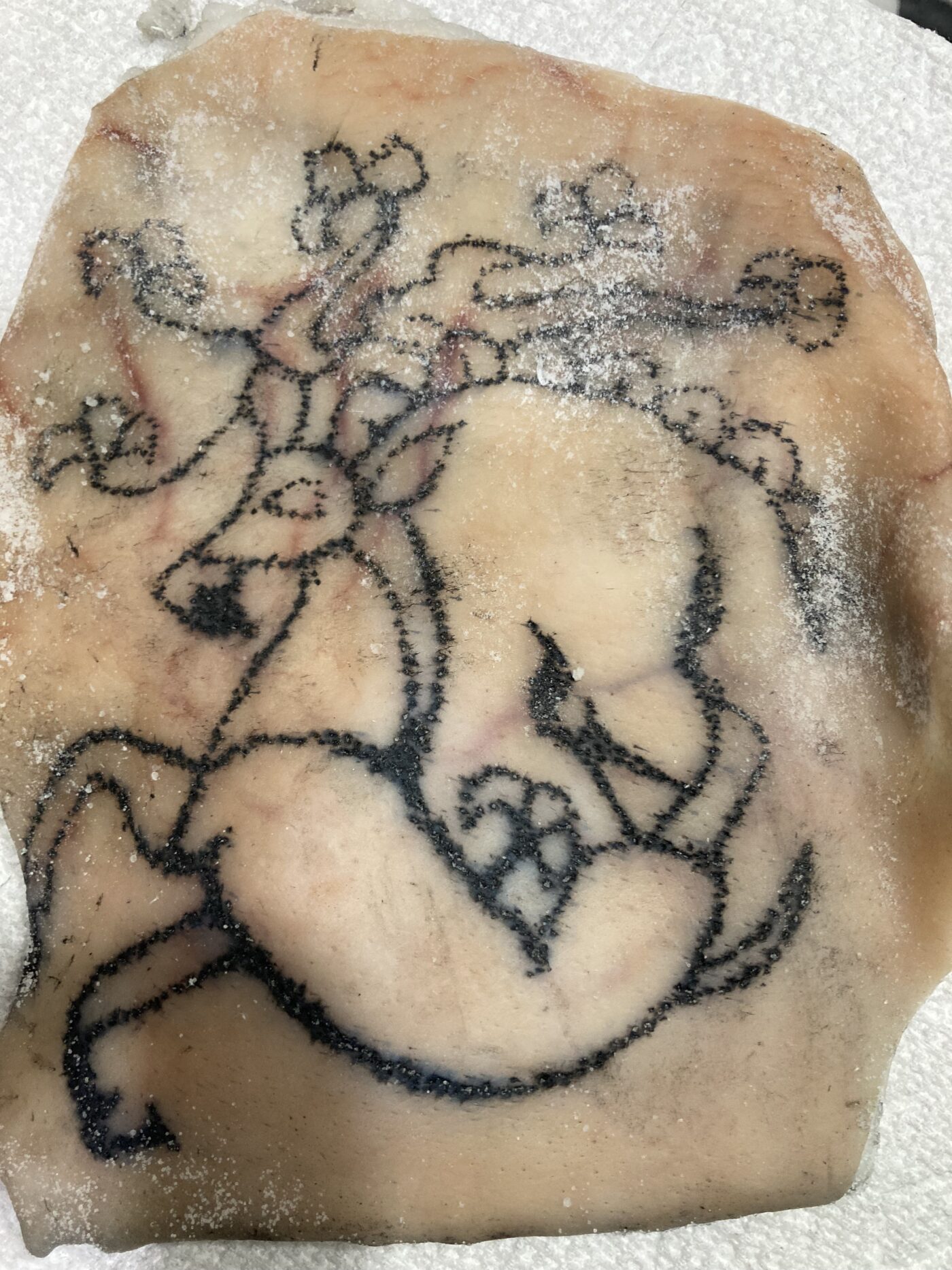In the summer of 1993, Dr. Natalia Polosmak discovered the body of a young woman, between 25 and 28 years old undisturbed in a subterranean burial chamber. The body was that of a representative of the Pazyryk culture and she came to be known as the Ukok Princess or Siberian Ice Maiden. The Pazyryk culture is a Scythian nomadic Iron Age archaeological culture, originally of Iranian stock and a culture contemporary to the Hallstatt culture period in Eastern and Central Europe, and the Roman Kingdom and spanning to the later Roman Republic. The Scythian’s founded a rich, powerful empire centered on what is now Crimea. Polosmak’s team extracted the mummified body, which was found to be in excellent condition and is among the most significant Russian archaeological findings of the late 20th century. There are a number of reasons for its significance, some of which I discuss further in the next section, but in relation to this project, it’s her tattoos that most interest me, which include an animal-style deer tattoo on one of her shoulders, and another on her wrist and thumb.She had been found buried beneath low mounds in log-lined chambers under more than seven feet of permafrost.
The Pazyryk burials are a remarkable feat of preservation due to the layers of permafrost that encapsulated the mounds. The preserved skin of the Ice Princess, also known as the Ice Maiden, and the Horseman are some of the best examples of ancient tattooing and give us insight into an otherwise lost culture. While not the oldest preserved examples of tattoos, they are some of the best-preserved.
The Project
Deciding to take a more hands on application of the process, some of the methods, and inks used in historical European tattooing. I naturally gravitated to what would be the next steps, an authentic historical recreation and mummification of one of those found tattoos. Among the best-preserved specimens found, were those of the Pazyryk Ice Princess.
While a true replication would be done on a human, the inks and methods are more dangerous and present much more of a risk to myself or another individual, so for the project I will be using pig skin as my canvas. Pig skin is layered with a epidermis, dermis, and inner layers just like human skin, and is the closest approximation without using an actual person. For the ink I will be using a period soot ink created during my previous experimentations, and bone needles. The final step in this would be to mummify it like the example found. We don’t have thousands of years to wait, so to expedite this, I will using a modern quick method used in school science classes that involves salt and borax. I will say again before you read any further, this is research and experimentation. If you’re interested in a tattoo there are modern day professionals who can assist, I am happy to recommend several. I have undergone a blood borne pathogen course for tattooing and during the recreation of these methods I have utilized modern PPE to keep myself from any incidents. At minimum, tattooing yourself without proper knowledge might cause irritation or allergic reactions including, but not limited to rashes, contact dermatitis, itching, blisters, open sores, and scarring. At the other end they may cause death.

Culann, you are insane in the best possible way. I’ve only done some cursory reading on tattoos in antiquity and the Middle Ages to get a general sense, but you definitely went and took this to the next level. The mummification is an archaeological science stroke of genius, my friend, and I think you should consider making a real paper about this and submitting it to EXARC’s journal. I’m dead serious. Hit me up if I can help.
Magistrissa Anna Syrakousina, OL. Trimaris
This is so awesome! I really enjoyed seeing your tattoo project last year at Aisles, and this next step is even cooler — I love that you got to do this on actual skin, and I really appreciated learning more about the history and process in your detailed documentation. I look forward to seeing how the mummification turns out!
This is a fascinating and well-documented project. I particularly appreciated your review of the background and history of tattooing in European and central Asian cultures, and I look forward to seeing your exemplar at the exhibit. Thank you for sharing your work!
WOW! This is a fascinating project. The thought you put into this is amazing. It is interesting to think about things like would they have used a new needle or just sharpened the one they had and, if so, how would they sharpen it. I have a very random question about your thin needle set up. Do you use anything sticky like beeswax or tar when you wrap the thin needle and handle with thread?
I can’t wait to see this in person!
I love this project and the really cool avenue of research it pursues. Great work!
This is a great project. It’s refreshing to see something about a culture that we don’t see or hear much about in the SCA. And also an art form that hasn’t had much attention. I look forward to hearing even more.